Better Sleep for People with Chronic Pain
Restoring Rest When Your Body Hurts
When you live with chronic pain, sleep often becomes the one thing you can’t reach — even when you need it most.
You lie down exhausted, but every position hurts. Your mind races, muscles tighten, and the more you try to rest, the more awake you feel. It’s a cycle that’s as physical as it is emotional: pain disrupts sleep, and poor sleep intensifies pain.
This cycle can feel endless, but it’s not unbreakable. With the right combination of nervous system regulation, pain-aware sleep hygiene, supplements, and mental support, people with chronic pain can regain truly restorative rest.
This article explores the biology behind pain-related insomnia and practical ways to improve sleep quality — without forcing it, sedating yourself, or giving up hope.
Looking for supplements for This? Click here.
🧠 The Vicious Cycle: Pain and Sleep
Pain and sleep are intertwined in a feedback loop.
🔁 How It Works:
Pain makes it hard to fall asleep due to discomfort, anxiety, or muscle tension.
Sleep deprivation increases pain sensitivity, by amplifying inflammation and reducing natural painkillers (endorphins).
Poor rest heightens stress hormones (like cortisol), which further worsens pain perception.
💬 Research shows that even one night of poor sleep can make the brain’s pain centers 40% more reactive.
Over time, this leads to heightened pain thresholds and emotional exhaustion.
✨ Restoring sleep isn’t just about comfort — it’s about pain management.
🌙 Why Pain Disrupts Sleep
Let’s look deeper at how chronic pain alters your sleep architecture.
🩸 Inflammation and Cytokines
Chronic inflammation increases pro-inflammatory cytokines, which interfere with melatonin and slow-wave (deep) sleep.
That’s why many people with autoimmune or neurological conditions feel unrefreshed even after long rest.
💥 Nervous System Hyperarousal
When your body is in pain, your sympathetic nervous system (“fight or flight”) stays active.
Instead of shifting into the parasympathetic (“rest and digest”) mode, your body remains alert — guarding against discomfort.
💬 This makes it difficult to fall asleep, stay asleep, or reach deep, healing sleep stages.
💭 Mental and Emotional Tension
Living with chronic pain often brings anxiety, frustration, and depression — all of which can heighten insomnia.
Cortisol and adrenaline remain high, keeping the mind “on guard.”
Even when the body is tired, the brain doesn’t feel safe enough to rest.
🌡️ Temperature Dysregulation
Many pain conditions, especially fibromyalgia, multiple sclerosis, and neuropathies, interfere with temperature control.
This can make it harder to reach the cooler core temperature needed to initiate sleep.
🩶 The Goal Isn’t “Perfect Sleep” — It’s Gentle Restoration
When living with chronic pain, striving for “perfect sleep” often backfires.
Instead, aim for restful states — quieting your body and mind even if full sleep doesn’t come immediately.
💬 The body heals during rest, not only during unconscious sleep.
🌿 Foundations for Better Sleep with Chronic Pain

Improving sleep starts with creating an environment and routine that tell your nervous system: You are safe now. It’s okay to rest.
Let’s break down the pillars that help you get there.
🛏️ Redesign Your Sleep Environment for Pain Relief
Small changes in your sleeping setup can make a big difference.
🛌 Mattress and Support
Use a medium-firm mattress for balanced support.
Add memory foam or pressure-relieving toppers to reduce joint compression.
Use pillows strategically to cushion pain points: between knees, under arms, or beneath the lower back.
💡 Experiment: A side-sleeping position with a pillow between the knees often reduces hip and lower-back pain.
🌡️ Temperature and Light
Keep your room cool (17–19°C or 63–66°F).
Use weighted blankets for grounding pressure (if tolerated).
Opt for warm, dim lighting an hour before bed — your brain reads it as dusk.
✨ Weighted blankets can improve serotonin and reduce nighttime anxiety in people with chronic discomfort.
🌿 Aromatherapy and Sound
Try lavender, bergamot, or chamomile essential oils for relaxation.
Use white noise, soft rain, or binaural beats to calm the nervous system.
💬 Consistency matters more than perfection. Choose one sensory cue and repeat it nightly.
🌬️ Use Breathwork to Soothe the Pain Response
Chronic pain keeps your breathing shallow — a sign your body is bracing itself.
Deep, intentional breathing can reverse this, signaling the vagus nerve to lower pain perception and calm the nervous system.
🌬️ Try This “4-7-8 Pain Release” Technique
Inhale through your nose for 4 seconds.
Hold gently for 7 seconds.
Exhale through your mouth for 8 seconds, releasing tension.
Repeat 5–10 cycles before bed or during flare-ups.
💨 This slows heart rate, reduces muscle tightness, and increases melatonin.
✨ Pain can’t thrive in a body that feels safe.
Want to try Breathwork? Click Here.
🌸 Gentle Movement Before Bed
Rest doesn’t mean total stillness — especially for chronic pain. Light stretching, yoga, or slow walking helps prevent stiffness and releases natural endorphins.
🧘 Try These:
Cat-Cow stretches (for spine mobility)
Legs-up-the-wall pose (reduces swelling and improves blood flow)
Child’s Pose (calms the nervous system)
💬 Move only to the point of relief, not strain. Even five minutes can reset your body’s pain threshold before bed.
🕯️ Mindful Wind-Down Rituals
Transitioning from pain management to rest requires deliberate unwinding.
Try this nightly sequence:
🕐 One Hour Before Bed
Dim all lights and lower noise.
Stop screens — blue light delays melatonin.
Drink a herbal tea like chamomile, valerian, or lemon balm.
🌿 30 Minutes Before Bed
Do 5 minutes of deep breathing.
Journal one sentence about what your body did manage today — not what it failed to do.
Apply a warm compress to stiff muscles or joints.
💗 At Bedtime
Repeat a calming affirmation:
“I allow my body to rest, even if it’s still healing.”
✨ Over time, your brain begins to associate these rituals with safety and rest.
💊 Supplements That Support Sleep and Pain Relief
While supplements aren’t cures, they can make the sleep-pain balance easier to maintain.
| Supplement | Role | How It Helps |
|---|---|---|
| Magnesium Glycinate | Relaxes muscles and supports GABA | Eases cramps and improves deep sleep |
| L-Theanine | Calms the mind | Reduces anxiety and pre-sleep stress |
| GABA | Inhibits overactive neurons | Helps nervous system downshift |
| Melatonin (0.3–1 mg) | Regulates circadian rhythm | Aids sleep onset without dependency |
| CBD (Cannabidiol) | Reduces inflammation and pain signals | May improve both pain and REM sleep |
| Omega-3 Fatty Acids | Anti-inflammatory | Helps with neuropathic pain |
💬 Always consult your doctor before mixing supplements, especially if you use pain medication.
Looking for supplements for This? Click here.
🥗 Foods That Support Rest and Recovery
Nutrition plays a big role in both inflammation control and sleep hormone production.
🌙 Best Evening Foods
Tart cherries → natural melatonin
Kiwi → serotonin + antioxidants
Bananas → magnesium + tryptophan
Oats or rice → slow carbs to boost serotonin
Fatty fish (salmon, sardines) → omega-3s for inflammation
🚫 Foods to Avoid After 6 p.m.
Caffeine, alcohol, or sugary snacks
Spicy or fried foods (can trigger inflammation or reflux)
✨ Food is medicine — especially for pain and rest.
🧘 Therapy for Pain-Related Insomnia

Chronic pain doesn’t just live in the body — it also shapes the mind.
Therapeutic support helps you rebuild trust in your body and release hypervigilance.
💗 Cognitive Behavioral Therapy for Insomnia (CBT-I)
Teaches your brain to reframe sleep anxiety — instead of fearing sleepless nights, you learn to relax without pressure.
🌿 Acceptance and Commitment Therapy (ACT)
Helps you accept the presence of pain without letting it dominate your attention.
This reduces nighttime rumination (“Will I sleep tonight?”) that keeps cortisol high.
🩵 Somatic Therapy
Encourages reconnection with the body — gentle breathing, grounding, and body scanning — to rebuild safety within physical sensations.
💬 Pain becomes less threatening when the body feels seen, not fought.
Looking for online therapy ? Click Here.
🩺 Medical and Behavioral Tools to Explore
If home-based strategies aren’t enough, these medical supports can help improve sleep quality:
CBT-I programs: proven long-term solution for pain-related insomnia
TENS therapy: mild electrical stimulation for nerve pain
Physical therapy or massage: improves circulation and muscle relaxation
Low-dose naltrexone (LDN): may reduce chronic inflammation and pain perception
Sleep study: rules out apnea or restless leg syndrome, common in chronic pain
💡 Combining these with lifestyle tools gives the best long-term outcome.
🌿 Rewriting the Relationship Between Rest and Pain
People with chronic pain often develop sleep anxiety — fear of the night itself.
This emotional loop keeps adrenaline high, preventing rest.
Breaking it starts with re-learning to associate bedtime with soothing, not suffering.
Try This:
Before bed, ask yourself:
“Can I let my body rest, even if it’s not perfect?”
Give yourself permission to rest without needing to fall asleep immediately.
This small shift reduces pressure — and paradoxically, allows sleep to come more easily.
💬 Rest is a skill, not an achievement.
🕯️ Sample Bedtime Routine for Chronic Pain
90 Minutes Before Bed:
Take magnesium glycinate or CBD oil (if using)
Stretch gently, focusing on pain-free movement
60 Minutes Before Bed:
Apply heat or topical magnesium to sore areas
Dim lights, use aromatherapy (lavender or bergamot)
30 Minutes Before Bed:
Sip chamomile or tart cherry tea
Do 5 minutes of slow breathing
Write one thing your body did well today
At Bedtime:
Focus on gratitude, not goals
Practice mindfulness or repeat: “I am resting safely.”
✨ Repeat nightly — the nervous system thrives on consistency.
🌙 The Healing Science of Slow Sleep
You don’t have to reach perfect 8-hour nights to feel better.
Even improving sleep quality by one hour per night can significantly lower pain intensity and inflammation markers.
Studies show that chronic pain patients who improved their sleep patterns experienced:
30% reduction in perceived pain intensity
25% improvement in daytime energy
Lower use of pain medication over time
💬 Sleep is not a luxury — it’s part of the treatment.
❤️ The Takeaway
If you live with chronic pain, it’s easy to feel like your body has turned against you.
But rest is still possible — not by fighting the pain, but by learning to calm the systems that amplify it.
By blending gentle breathwork, magnesium-rich nutrition, therapy, and a nurturing environment, you can retrain your body to feel safe again — and when the body feels safe, sleep follows.
🌙 Better sleep isn’t about escaping your pain — it’s about befriending your body until it can finally exhale.
📚 References
Finan, P. H., Goodin, B. R., & Smith, M. T. (2013). The association of sleep and pain: An update and a path forward. Journal of Pain.
Haack, M. et al. (2012). Sleep deficiency and pain sensitivity in adults. Sleep.
Walker, M. (2017). Why We Sleep. Scribner.
Choy, E. H. (2015). The role of sleep in pain and fatigue in chronic conditions. Rheumatology.
Irwin, M. R. (2019). Sleep and inflammation. Nature Reviews Immunology.
American Academy of Sleep Medicine. (2022). Cognitive Behavioral Therapy for Insomnia in Chronic Pain.
Jerath, R. et al. (2015). Neural mechanisms linking breathwork, emotion, and relaxation. Frontiers in Human Neuroscience.
Häuser, W. et al. (2011). Efficacy of relaxation techniques for chronic pain conditions. Cochrane Review.
Garland, E. L. et al. (2019). Mindfulness-based interventions for chronic pain and insomnia. Current Psychiatry Reports.
Raja, S. N. et al. (2020). The burden of chronic pain and potential interventions. New England Journal of Medicine.
Related Posts
-

Supplements to Stay Calm Before Public Speaking
Breathwork is one of the simplest yet most powerful tools for calming pre-performance stress 🌬️. By slowing and deepening your breathing, you lower cortisol, steady your heartbeat, and re-center your mind. Learn the science behind how controlled breathing activates your parasympathetic nervous system — helping you speak, perform, or focus with grounded confidence. 🌿
-

How to Handle Customer Service Stress Without Losing Your Cool 💬🧘♀️
Customer service can test even the calmest person’s patience. 😤 Learn how to handle difficult clients and daily pressure without losing your cool — through better mindset management, calming breathwork, and practical communication tools. Stay grounded, protect your energy, and transform stress into strength. 🌿
-
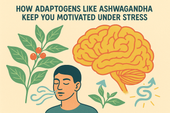
How Adaptogens Like Ashwagandha Keep You Motivated Under Stress
Feeling overwhelmed and unmotivated? 🌿 Discover how adaptogens like Ashwagandha can help you stay centered, focused, and energized under stress. Learn how supplements, breathwork, and therapy work together to restore your natural motivation and help you thrive — even during life’s toughest moments. 💪✨
-
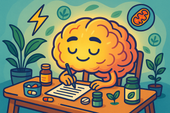
Supplements That Support Long-Term Productivity Without the Crash ⚡🌿
Cortisol — your body’s main stress hormone — can be both your best friend and worst enemy. ⚡ When balanced, it keeps you focused, energized, and ready to act. But when it stays high for too long, it leads to fatigue, anxiety, and emotional crashes. Learn how to regulate cortisol naturally through supplements, sleep, and stress management to maintain calm, steady productivity. 🌿
-
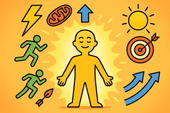
Why Energy Levels and Motivation Go Hand in Hand ⚡🧠
B-vitamins are the brain’s spark plugs 🔋. They turn food into fuel, support neurotransmitter production, and keep your mood, energy, and focus balanced. Learn how vitamins like B6, B9, and B12 work together to power the nervous system, reduce fatigue, and keep motivation high. 🌿
-
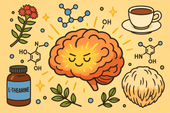
The Science of Motivation: Can Nootropics Help You Stay Focused? 🧠⚡
Nootropics are nature’s tools for sharper thinking and sustainable focus 🧠🌿. From Rhodiola and Lion’s Mane to L-theanine and Bacopa, these brain-boosting compounds enhance motivation, memory, and stress resilience. Learn the science behind how nootropics work — and how to use them safely for peak mental performance and clarity. ⚡
-
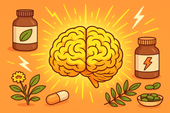
How Natural Supplements Can Boost Your Daily Drive
Cortisol is your body’s main stress hormone — powerful, necessary, but often misunderstood. ⚡ When balanced, it keeps you alert and energized; when chronically elevated, it drains mood, motivation, and focus. Learn how to regulate cortisol naturally through nutrition, supplements, and calming lifestyle habits for steady energy and emotional balance. 🌿
-
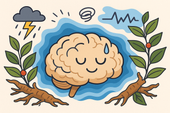
Ashwagandha for Stress and Low Mood
Breathwork is more than a relaxation tool — it’s a way to rewire your nervous system. 🌬️ Through intentional breathing, you can reduce stress hormones, improve focus, and calm emotional turbulence. This guide explores the science of breathwork and its powerful effects on mental clarity, resilience, and emotional regulation. 🌿
-
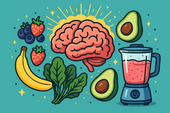
Mood-Boosting Smoothie Recipes
Your blood sugar affects far more than energy — it influences mood, focus, and emotional stability too 🍎. Learn how maintaining balanced glucose levels supports brain health, reduces anxiety, and prevents emotional crashes. Discover the foods and habits that keep your mind calm and your energy steady throughout the day. 🌿
-
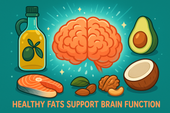
How Healthy Fats Support Brain Function
Your brain thrives on healthy fats 🧠💧. From omega-3s to MCTs, the right fats enhance focus, memory, and mood while protecting against inflammation and aging. This article explores how good fats — like those from olive oil, salmon, avocado, and nuts — build sharper thinking, emotional balance, and lasting brain vitality. 🌿
-
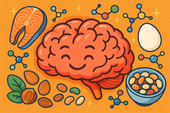
The Role of Protein in Mental Clarity
Protein isn’t just for muscles — it’s for your mind. 🧠 This guide explores how amino acids from high-quality protein fuel neurotransmitters, stabilize mood, and sharpen focus. Learn how balanced protein intake supports dopamine, serotonin, and energy regulation to boost mental clarity and emotional stability naturally. 🍳🌿
-

Nutrients That Support Emotional Stability
Your emotions are built from nutrients as much as from thoughts 🌿. This science-backed guide reveals the vitamins, minerals, and healthy fats that stabilize mood and reduce stress — from B-vitamins and magnesium to omega-3s and probiotics. Learn how balanced nutrition supports neurotransmitters, strengthens resilience, and promotes lasting calm and clarity 🧠✨.
-
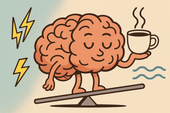
How Caffeine Affects Your Mood ☕
Your morning coffee might lift your spirits — but what’s really happening inside your brain? ☕ This in-depth guide explores how caffeine affects mood, motivation, dopamine, and stress. Learn how to enjoy caffeine mindfully without triggering anxiety, burnout, or emotional crashes. Discover the science behind your energy highs and lows — and how to find calm, sustainable focus. 🌿
-
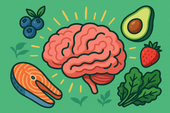
The Best Anti-Inflammatory Diet for Mental Health
Inflammation doesn’t just affect your body — it impacts your mood, focus, and emotional resilience too 🌿. This comprehensive guide reveals how an anti-inflammatory diet can support mental health by reducing neuroinflammation, balancing gut bacteria, and stabilizing blood sugar. Learn which foods to eat (and which to avoid) to protect your brain, boost serotonin, and promote lasting calm. 🧠✨
-

Why Sugar Spikes Can Worsen Depression
Sugar highs can make you feel good for a moment — but what comes next can fuel emotional crashes and deepen depression 🍭. This article explains how blood sugar spikes disrupt brain chemistry, increase inflammation, and destabilize serotonin. Learn how food, supplements, breathwork, and therapy can help you break the sugar–mood cycle and restore lasting emotional balance 🌿.
-
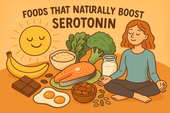
Foods That Naturally Boost Serotonin
Serotonin isn’t just a brain chemical — it’s your body’s built-in mood stabilizer 🌞. This in-depth guide explores how natural foods like salmon, eggs, bananas, and dark chocolate can elevate serotonin levels, while gut health, key nutrients, supplements, breathwork, and therapy create the perfect synergy for calm and emotional balance. Learn how to support your mind through diet, lifestyle, and mindset — naturally. 🌿
-
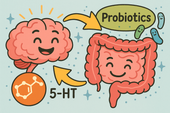
Probiotics for Mood Balance
-
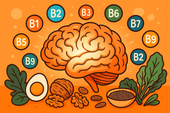
B-Vitamins and Their Role in Mental Health
Methylation is one of your body’s most important biochemical processes — influencing mood, energy, and focus. Powered by B-vitamins like B6, B9, and B12, it helps your brain create serotonin, detox efficiently, and maintain emotional balance. 🌿
-
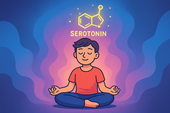
5-HTP for Serotonin Support
Calm isn’t just an emotion — it’s a physiological state where your body and mind finally sync in peace. By slowing your breath, softening your thoughts, and creating safety within, you restore the deep relaxation your nervous system craves. 🌿
-

St. John’s Wort for Mild Depression
Antidepressants can be life-changing for many — but understanding how they work and what natural options like St. John’s Wort can complement them is key. Learn how both approaches affect brain chemistry, mood balance, and long-term emotional wellness. 🌿
-
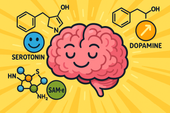
SAM-e: A Natural Mood Booster
Emotional regulation is the art of staying calm and grounded, even when life feels chaotic. By balancing your brain, body, and breath, you can respond with clarity instead of reacting from stress — building real emotional resilience and inner peace. 🌿
-

Rhodiola Rosea for Emotional Resilience
Neuroplasticity is your brain’s ability to grow, adapt, and heal — even after stress or trauma. Every thought, emotion, and habit reshapes your neural pathways, helping you build stronger emotional resilience, sharper focus, and lasting mental balance. 🌿
-
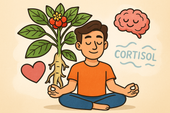
Ashwagandha for Stress and Low Mood
Adaptogens are nature’s stress balancers — powerful herbs like ashwagandha, rhodiola, and reishi that help your body adapt to tension, fatigue, and change. By regulating cortisol and supporting your nervous system, they build calm focus and emotional resilience from the inside out. 🌙
-
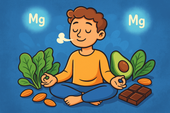
Magnesium’s Role in Emotional Regulation
Neuroscience helps us understand why we feel, think, and react the way we do. From brain chemistry and neural circuits to stress responses and emotional learning, the science of the brain reveals how our minds can heal, grow, and find balance. 🌿
-
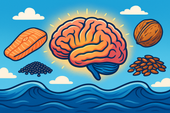
Omega-3 Fatty Acids and Emotional Well-Being
Nutrients aren’t just fuel — they’re communication signals that tell your brain and body how to function. From magnesium and vitamin D to omega-3s and B vitamins, the right mix of nutrients helps calm your mind, balance hormones, and support emotional and physical well-being. 🌙
-
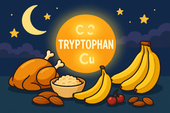
The Role of Tryptophan in Sleep Health
Mental health isn’t just the absence of illness — it’s the foundation of calm, focus, and emotional resilience. From managing stress and anxiety to nurturing self-compassion, understanding your mental well-being is the first step toward a balanced, more peaceful life. 🌿
-

Nutrients That Promote Nighttime Relaxation
Potassium does more than balance fluids — it also helps your body and mind relax at night. By calming nerves, reducing muscle tension, and supporting steady heart rhythm, potassium-rich foods like bananas, sweet potatoes, and coconut water can promote deeper, more restful sleep. 🌙
-

Sleep-Friendly Smoothie Recipes
Melatonin is your body’s natural sleep signal — a hormone that tells your brain when it’s time to rest. Learn how melatonin works, which foods and habits boost its production, and how to use it wisely for deeper, more restorative sleep without dependence. 💤
-
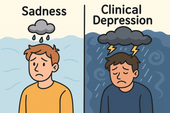
The Difference Between Sadness and Clinical Depression
Your emotions aren’t just in your mind — they’re written in your brain chemistry. Serotonin, dopamine, and GABA work together to regulate mood, motivation, and calm. When they fall out of balance, you may feel anxious, fatigued, or low. Learn how these brain chemicals influence your mental health and what you can do to restore harmony naturally. 🌿
-
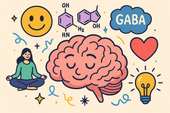
How Brain Chemistry Influences Mood
Your brain is a symphony of neurotransmitters — serotonin, dopamine, GABA, and more — working together to shape how you think and feel. When they’re balanced, you experience calm focus and emotional stability. When they’re not, mood swings and fatigue can follow. Learn how to naturally support these vital messengers for better mood and mental clarity. 🌿
-
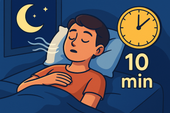
How to Fall Asleep in Under 10 Minutes
The military knows a few secrets about falling asleep fast — and they work even in chaos. This article explores the science behind rapid relaxation, including the famous “Military Sleep Method,” which teaches your body to shut down stress and rest on command. Learn how discipline, breath, and focus can help anyone fall asleep in minutes. 🌙
-
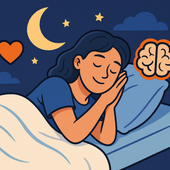
Why Emotional Resilience Improves Sleep
Emotional resilience isn’t just about mental strength—it’s also a key ingredient for better sleep. When your emotions are balanced, your body releases fewer stress hormones, your mind quiets faster, and your sleep becomes deeper and more restorative. Learn how to cultivate calm through mindset, breathwork, and daily habits. 🌙
-
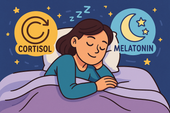
The Connection Between Stress Hormones and Sleep
Chronic stress can quietly reshape your body’s chemistry, raising cortisol, disrupting sleep, and draining your energy. This guide explores how long-term stress affects your nervous system, hormones, and rest—and how to restore calm through breathwork, nutrition, and daily recovery rituals. 🌿
-
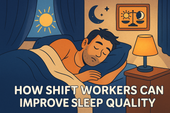
How Shift Workers Can Improve Sleep Quality
For shift workers, caffeine can be both a lifeline and a sleep disruptor. Learn how to use it strategically—boosting alertness during work hours without sabotaging rest. This guide explores timing, dosage, and smarter natural alternatives to keep your energy steady and your sleep restorative. 🌙
-
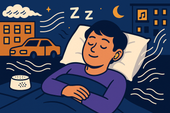
How to Sleep Better in a Noisy Environment
Living in a noisy area doesn’t mean sacrificing your rest. Learn practical and natural strategies to sleep better in loud environments—from using sound masking and breathwork to creating calming rituals that help your brain tune out the chaos. Find inner silence even when the world outside won’t quiet down. 🌙
-
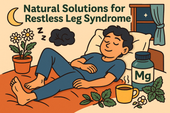
Natural Solutions for Restless Leg Syndrome (RLS)
Struggling to sleep deeply and wake refreshed? This soothing guide explores how the body restores itself during quality sleep—and how to support it naturally. Learn about the science of rest, the role of nutrients, and the rituals that promote deep, uninterrupted slumber. 🌙
-
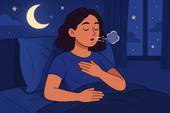
How to Overcome Middle-of-the-Night Anxiety
Middle-of-the-night anxiety can make even the calmest mind spiral into worry. This guide reveals practical, evidence-based techniques to help you stop the 3 A.M. overthinking loop—from breathwork and journaling to herbal supplements and therapy-based tools. Learn to retrain your nervous system and find peace when the world is asleep. 🌙
-

The Perfect Evening Herbal Blend
Discover the calming power of nature in your teacup. The perfect evening herbal blend combines chamomile, lemon balm, lavender, and adaptogens like ashwagandha to relax your body and quiet your mind before bed. Learn how to craft and customize a soothing, sleep-enhancing tea ritual that helps you unwind, restore, and wake up refreshed. 🌙
-

How to Cycle Sleep Supplements for Maximum Effectiveness
Wondering why your sleep supplements stop working after a while? This guide breaks down how to cycle sleep aids like melatonin, magnesium, and ashwagandha for consistent, long-term results. Learn when to rest your body, how to prevent tolerance, and what natural methods—like breathwork and therapy—enhance your sleep cycles. 🌙
-
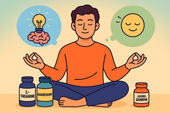
The Best Supplements for Both Relaxation and Focus
Calm your mind and sharpen your focus with the perfect blend of natural supplements. From L-theanine and magnesium to Rhodiola and Lion’s Mane, this science-based guide shows how to achieve relaxation and clarity at the same time. Discover stacks that support your nervous system, balance mood, and keep your mind laser-focused without the crash. 🌿
-

How to Sleep Better During Travel
Traveling can be thrilling—but sleepless nights can ruin even the best trips. From supplements like magnesium and melatonin to soothing breathwork and therapy-based techniques, this guide shows you how to sleep deeply on planes, in hotels, or across time zones. Learn to calm your body, reset your circadian rhythm, and build rest rituals that work anywhere in the world 🌙
-
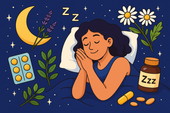
Improving Sleep in Menopause with Supplements
Menopause can make peaceful sleep feel impossible — but balance is within reach 🌿. This article explores how supplements like magnesium, ashwagandha, and black cohosh can ease night sweats, calm the mind, and restore your natural sleep rhythm during hormonal changes.
-
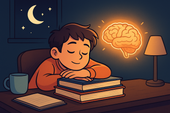
Sleep Support for Students During Exams
Exam stress can make it hard to rest — but sleep is what helps you perform your best 💤. This article explains how to improve sleep quality during exams through better study habits, natural supplements, breathwork, and therapy tools to calm the mind and sharpen focus.
-

Rest Strategies for Entrepreneurs
Entrepreneurs often burn out chasing their vision — but rest is the real fuel for success 🌙. This article explores science-backed recovery strategies for founders, including sleep, breathwork, therapy, and nutrition techniques that sharpen creativity and sustain performance.
-

How Sleep Affects Athletic Recovery
Sleep is where strength is built. 💤 This article explores how deep sleep drives muscle recovery, hormonal balance, and athletic performance — plus how supplements like magnesium, melatonin, and ashwagandha can enhance overnight repair and boost training results.
-

How to Sleep Better During Seasonal Changes
Seasonal shifts can throw your sleep off balance 🌦️. This article explains how light, temperature, and hormones change with the seasons — and how to restore your rhythm naturally through melatonin-supportive foods, breathwork, and therapy for emotional balance.
-

Foods That Naturally Boost Melatonin
Want to fall asleep faster without supplements? 🌙 This article explores how foods like tart cherries, pistachios, and kiwi naturally boost melatonin, the hormone that regulates sleep. Learn how to build an evening meal plan — plus simple rituals like breathwork and herbal tea — to improve rest and reset your circadian rhythm.
-

The Role of Herbal Tea in Relaxation
Herbal tea is more than comfort in a cup 🍵 — it’s nature’s gentle way to calm the mind and relax the body. This article explores how teas like chamomile, lavender, and lemon balm support stress relief, sleep quality, and emotional balance — plus how to pair them with magnesium, breathwork, and mindful rituals for deeper peace.
-

Lavender Extract and Its Calming Effects
Lavender extract is one of nature’s most soothing remedies 🌸. This article explores how lavender calms the nervous system, lowers cortisol, and improves sleep — plus how to combine it with magnesium, breathwork, and therapy for deep relaxation and emotional balance.

















































